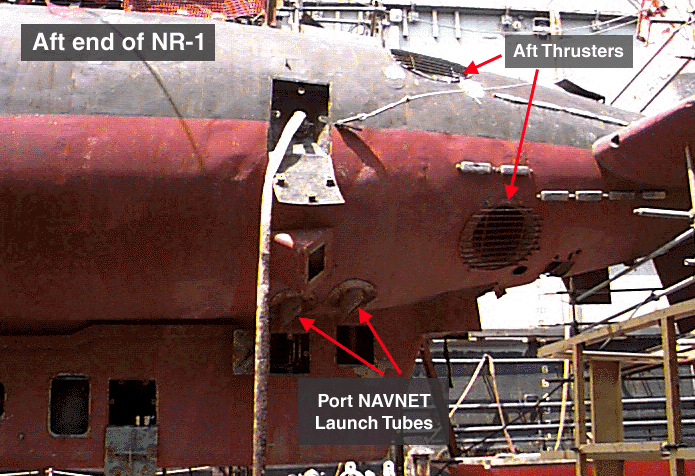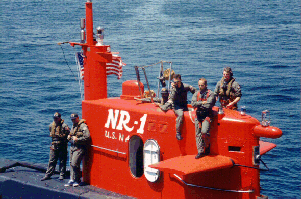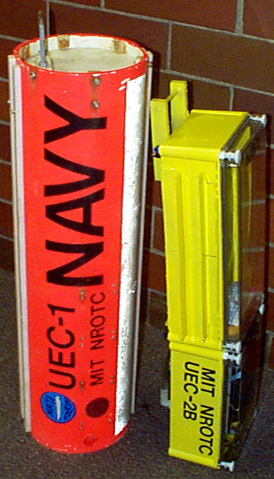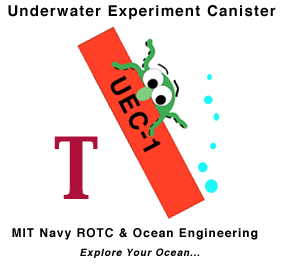Project Background:
The idea for the UEC project was inspired by NASA's Small Shuttle Payloads Project (SSPP). In
this program NASA provides a family of containers in which organizations and institutions
can place their experiments. These containers cover a range of sophistication levels, and
are placed in the otherwise unused space of the Shuttle's cargo hold.
The UEC is the underwater version of the SSPP. It was envisioned to
require no (or very little) supervision from the ship's crew. In essence the experiment
would just be tagging along for the ride.
The Electric Boat Corporations
NR-1 Planning office suggested that additional stand-alone experiments could be placed in
NR-1's NAVNET launch tubes. |
Project Outline:
These experiments should be small, self-contained, and require no
supervision from the crew, aside from initial start-up. The UECs are designed to be
mounted in NR-1's NAVNET launchers. NAVNET is another term for the AN/BQN-8 underwater
beacons that can be deployed by the submarine. NR-1 can then home in on these beacons at a
later time. The UECs could also be mounted to hard points on other parts of the
submarine. We are currently building the second generation of UEC which has data
collection and experiment control capabilities. |

Submarine NR-1 in dry dock. Showing
the location of the NAVNET launch tubes where UECs are mounted. |
| NR-1 typically operates in the Gulf of Mexico, the
Florida Keys, the Caribbean, and Mediterranean Sea. She is at operational depth for about
1-3 weeks at a time and operates at depths of up to 3000 feet. So these are the most
likely places for the UECs to be operating in. However, we are designing the power
and data systems to operate a full ocean depth. The usable
space of UEC-1 is approximately 8 inches in diameter and 30 inches long. The usable
space of a second generation UEC (UEC-2x) is two bays 15" x 5" x7.5" each. |
Currently four (4) types UEC are envisioned:
- A free flooding unit: (UEC-1, Built)
This unit is just a canister that is open to the water and has mounting hard points on the
inside. This might be good for testing materials and small components under real operating
conditions cheaply.
- A Data Collection/Control Unit: (UEC-2B, built and under improvement) This unit has an oil-compensated electronics bay and a
microprocessor for data-collection and experiment control.
- A water sample collection unit: This unit
is designed to take about 40 water samples at preset intervals (sampling one every 12
hours for about 3 weeks). The time stamps on the water samples can later be correlated
with the submarine's navigational plot to determine the sample location. We are also
looking into how it could take samples on command from the platform. This would allow a
submarine to take a water sample WITHOUT breaking SUBSAFE.
- A bottom resting unit: When the units are placed in the NAVNET
launchers so they can be jettisoned by NR-1. This version is designed to be jettisoned. It
would then run its experiment, upon completing that, it would return its data to
civilization. Possible mechanisms for this include floating to the surface and being pick
up, transmitting the data once surfaced, or being retrieved by NR-1. A normal NAVNET could
be deployed with it to facilitate finding the UEC.
|



